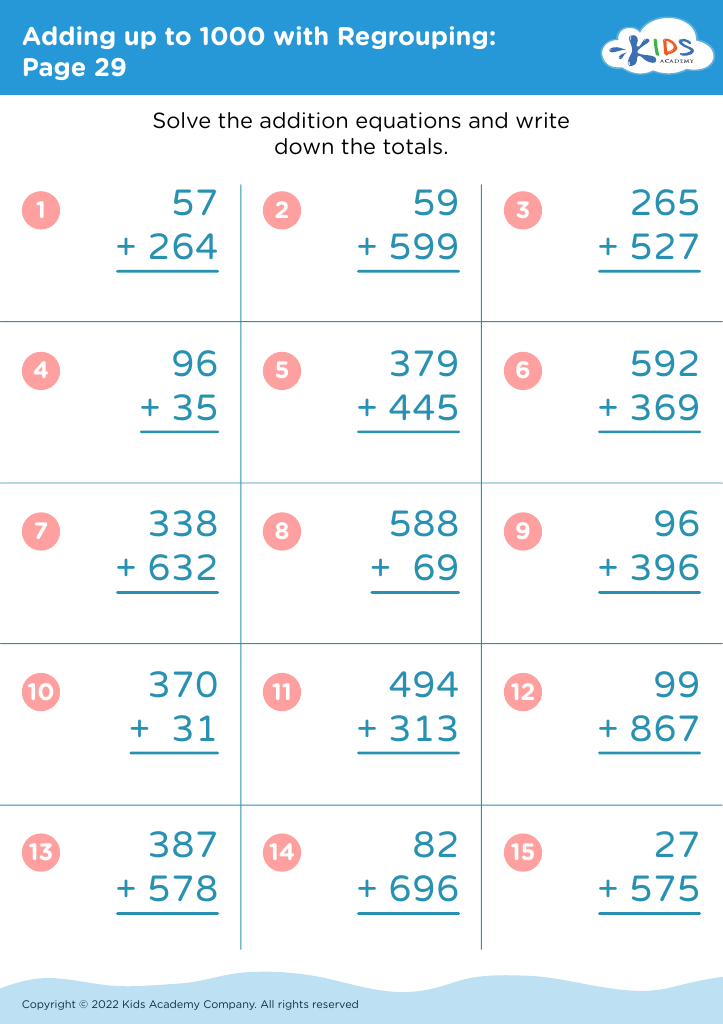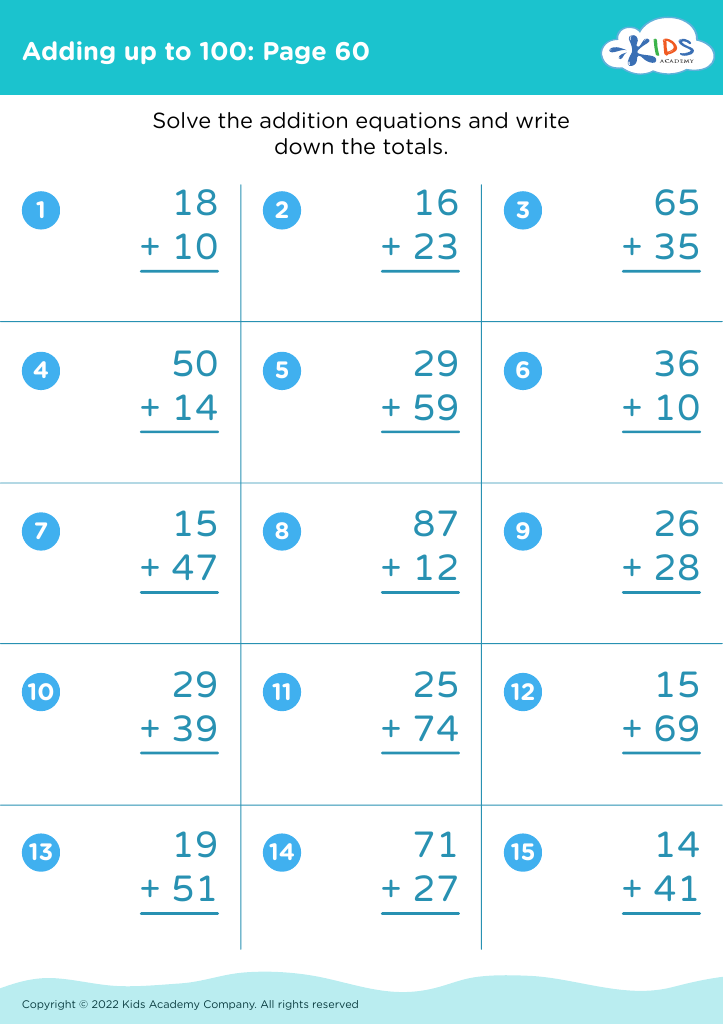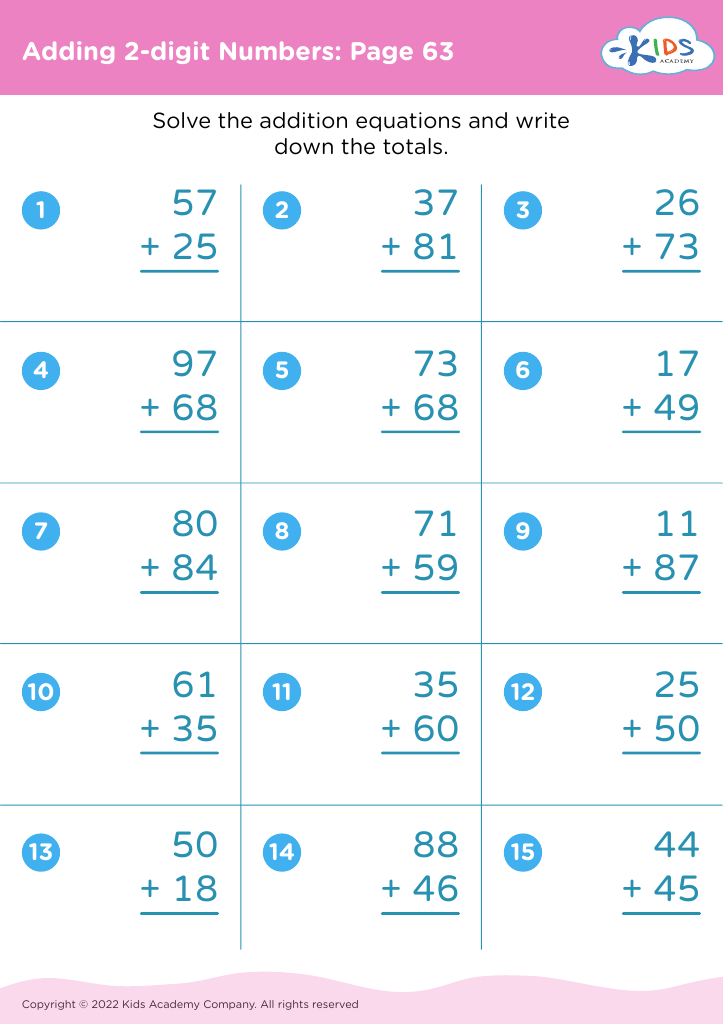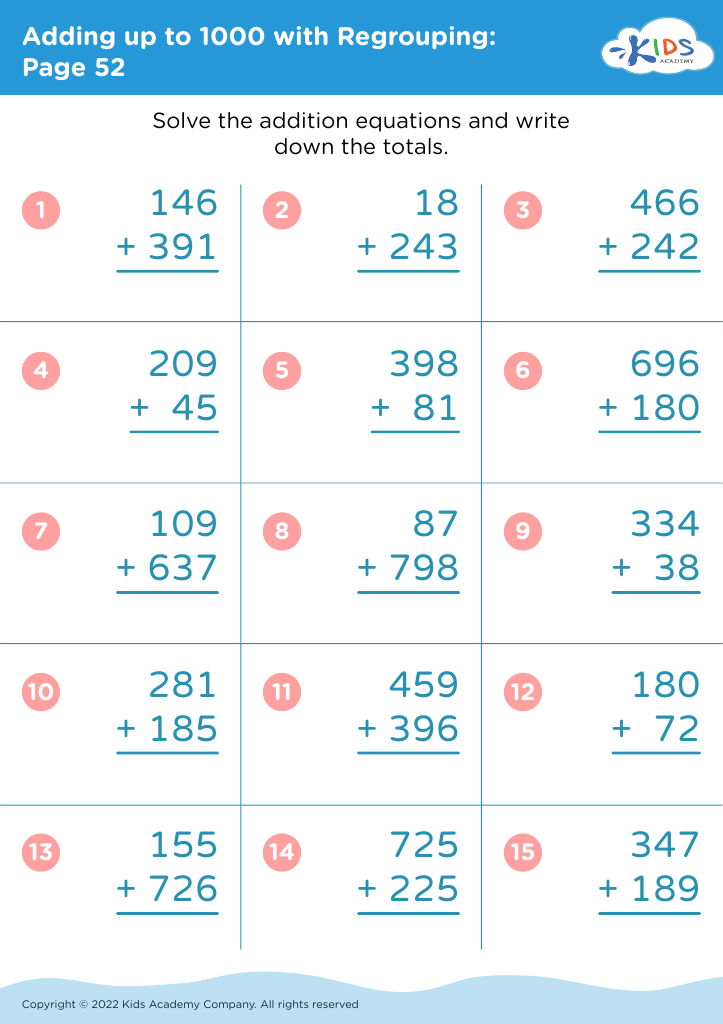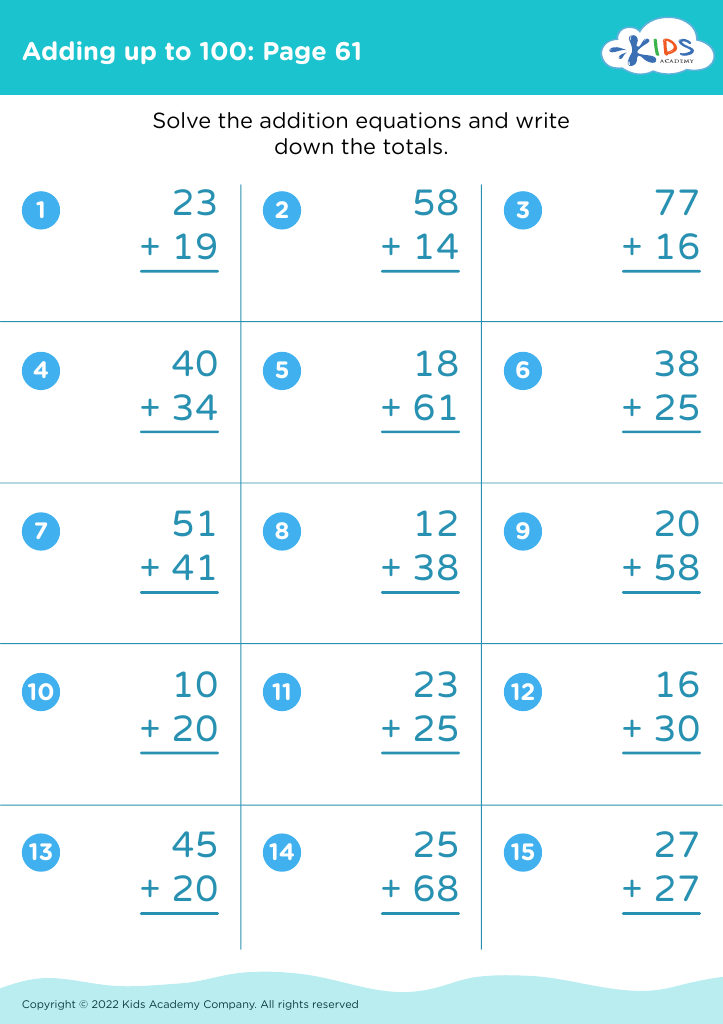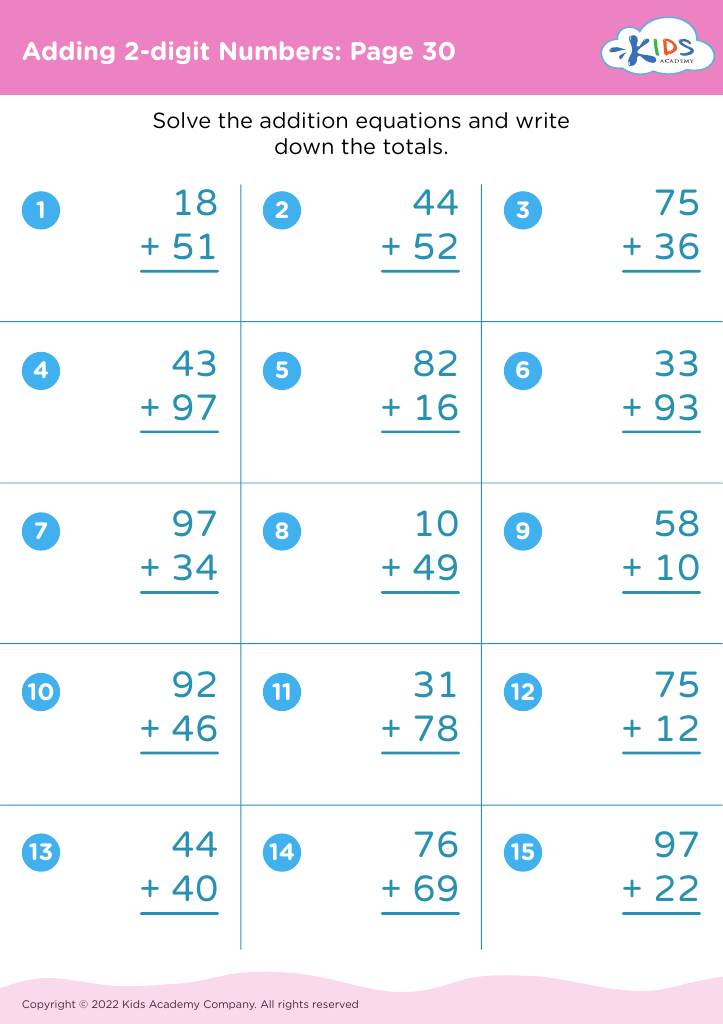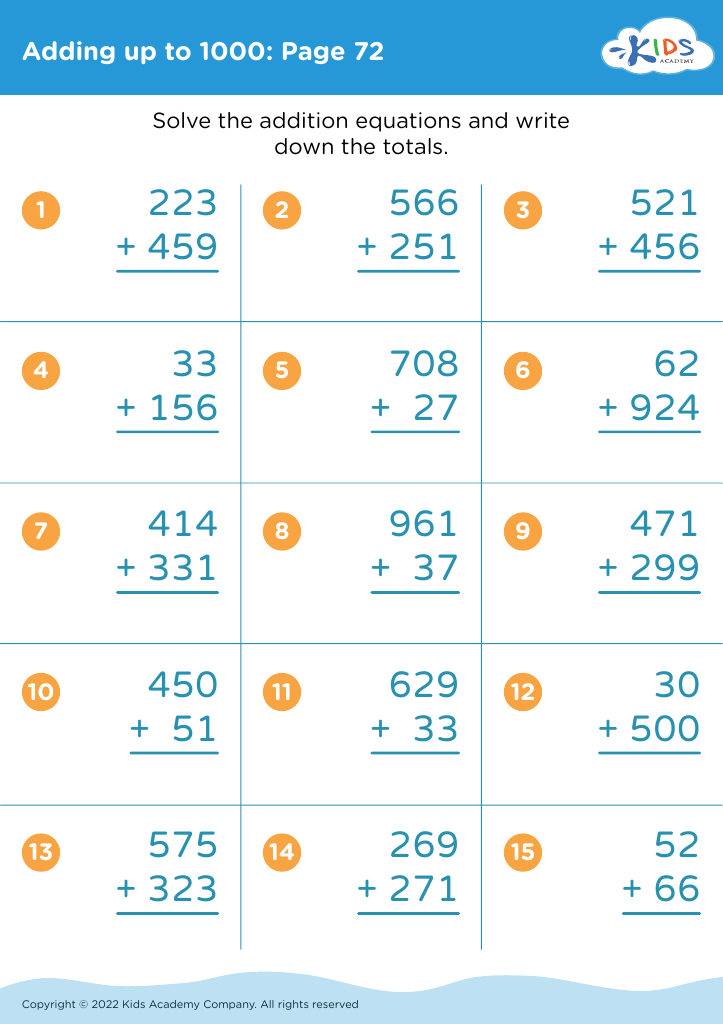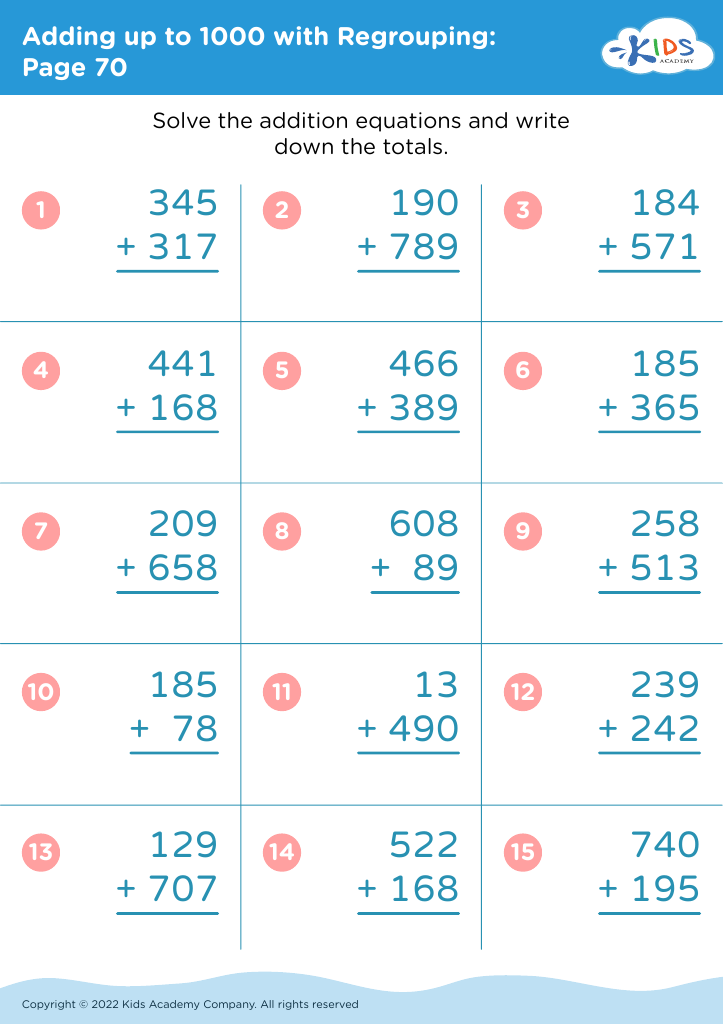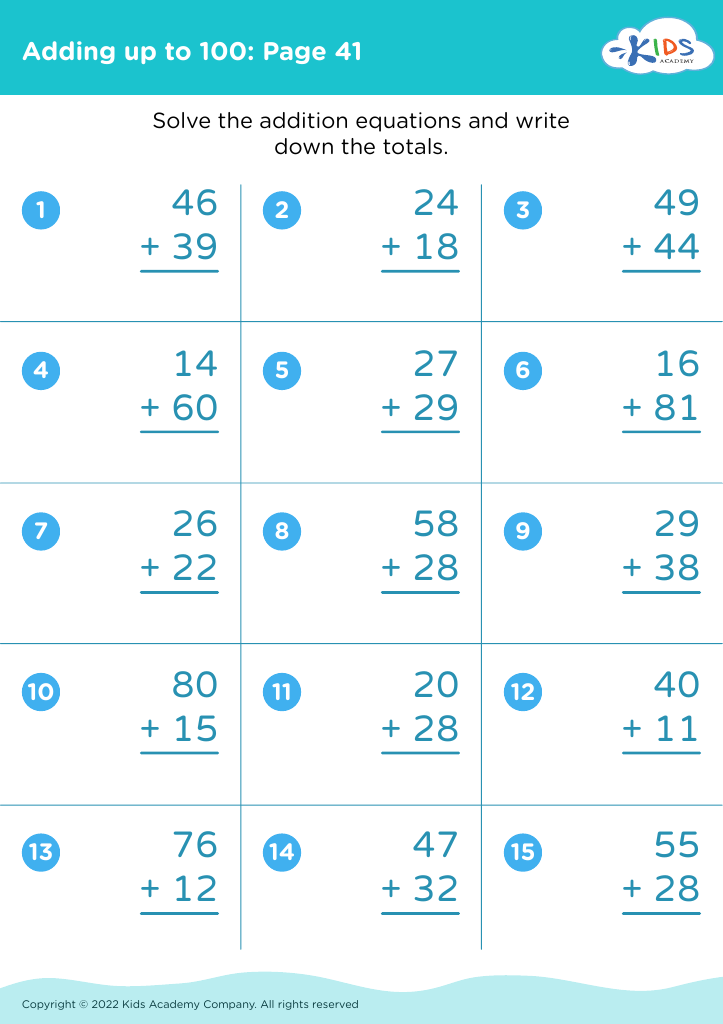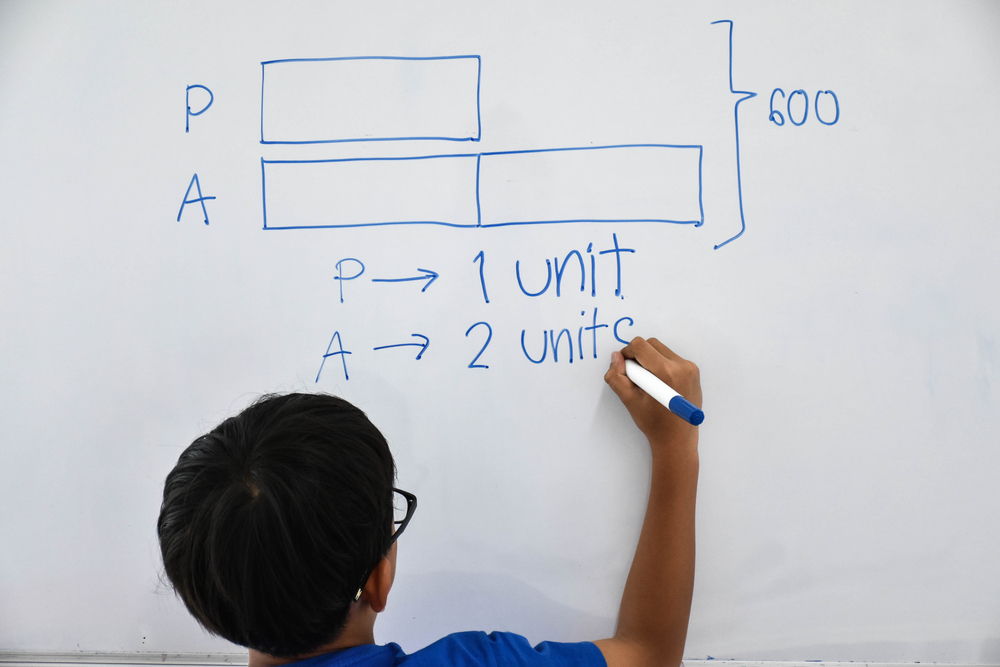Understanding Sequences Worksheets for Ages 6-7
23 filtered results
-
From - To
"Understanding Sequences Worksheets for Ages 6-7" help young learners master essential skills in logical progression and pattern recognition. Perfect for 1st and 2nd graders, these fun, educational worksheets guide children through activities like arranging events in order, predicting future elements, and comprehending simple algorithms. Each worksheet is designed to engage young minds with colorful illustrations and age-appropriate challenges. As kids work through the sequences, they build cognitive skills, enhancing their problem-solving abilities and preparing them for more advanced math and reading concepts. Ideal for classroom use or fun at-home practice, these worksheets make learning sequences enjoyable and effective.
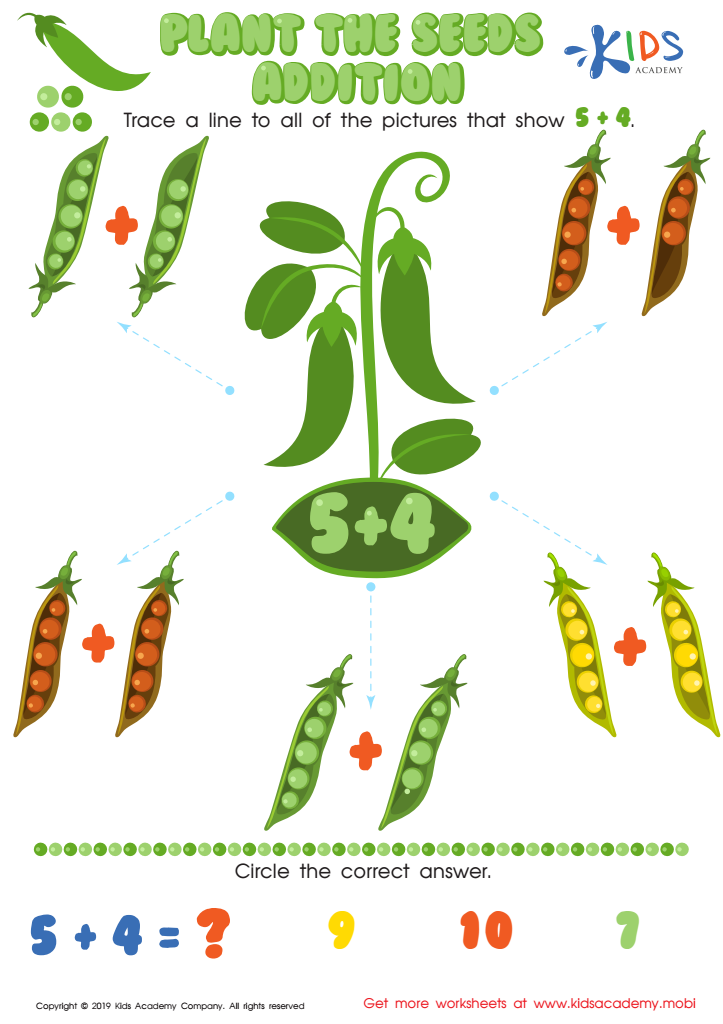

Plant the Seeds Addition Worksheet
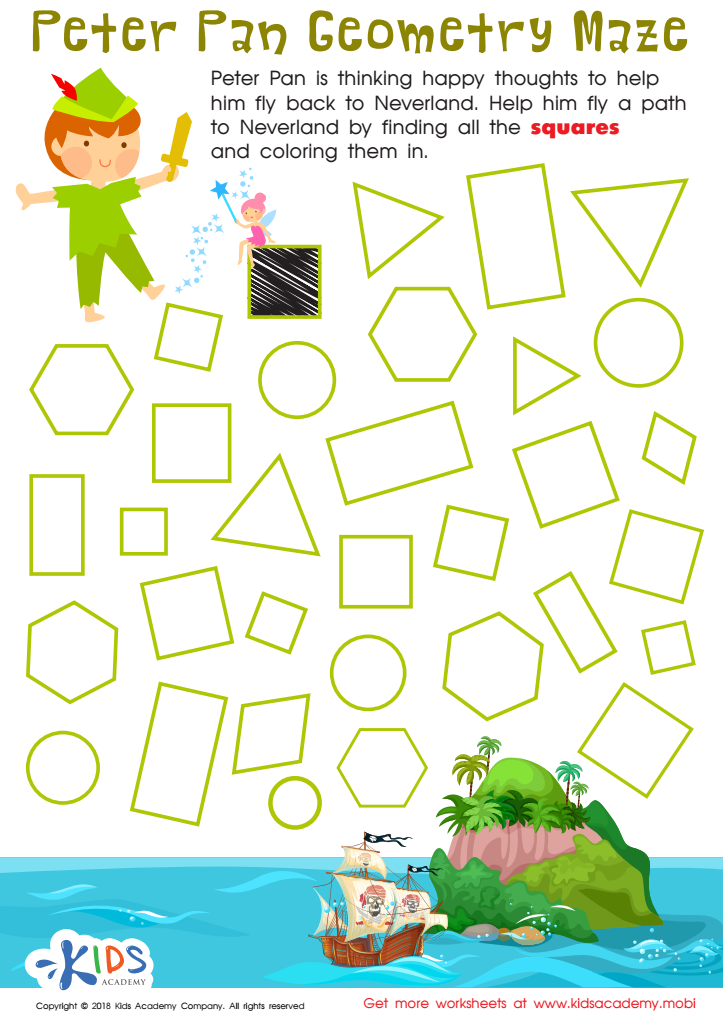

Peter Pan Worksheet


Snowman Tracing Winter Words Worksheet
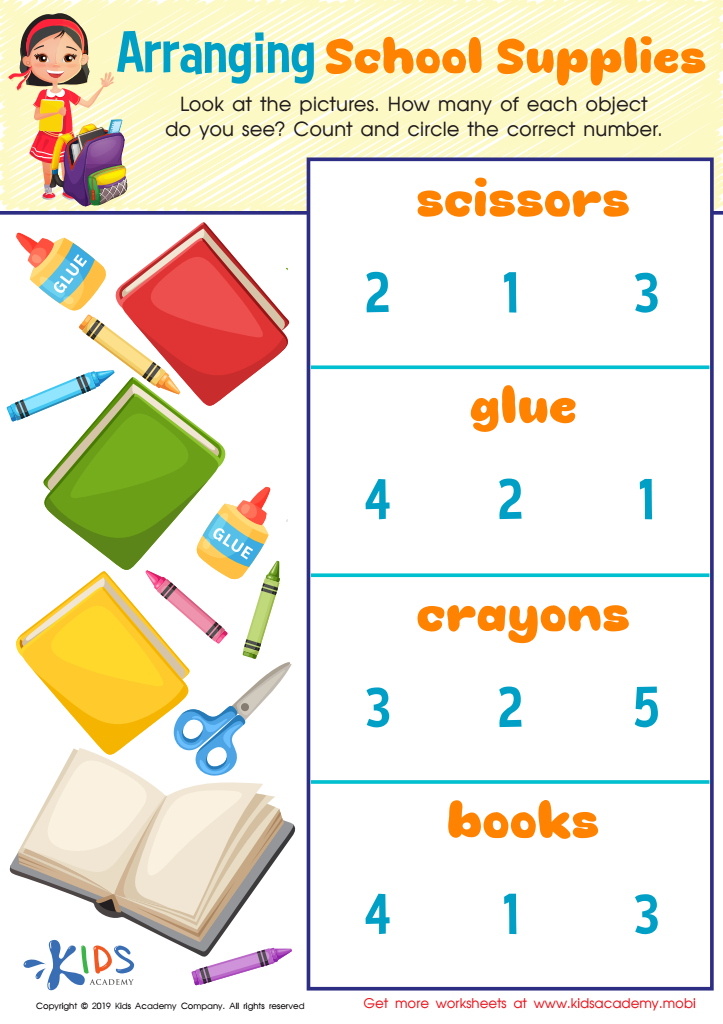

Arranging School Supplies Worksheet
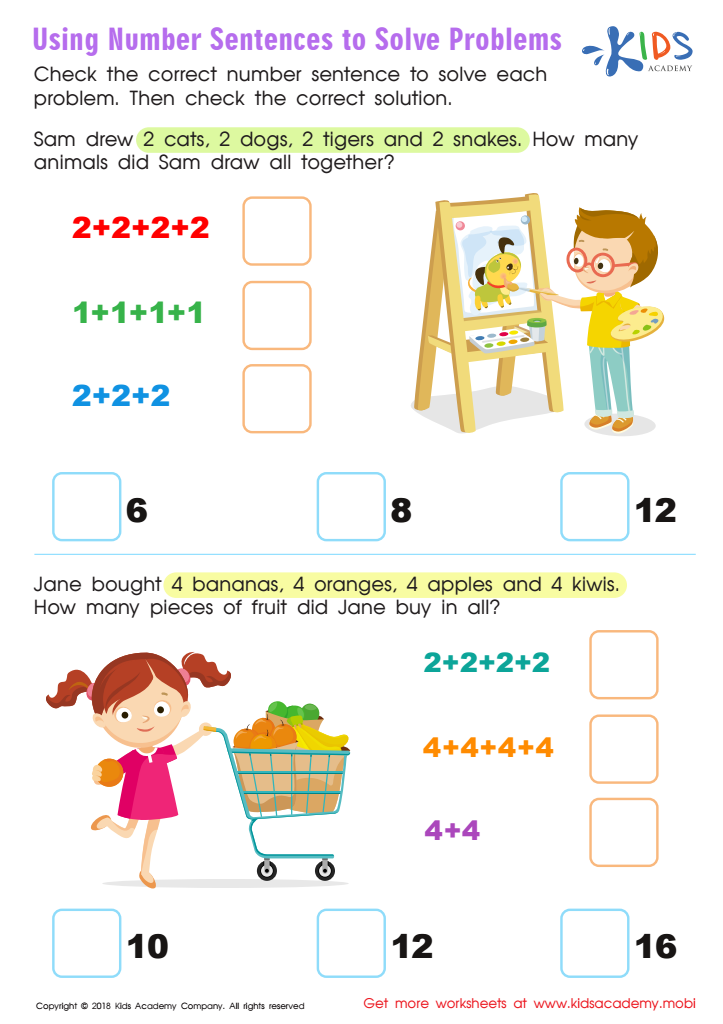

Using Number Sentences to Solve Problems Worksheet
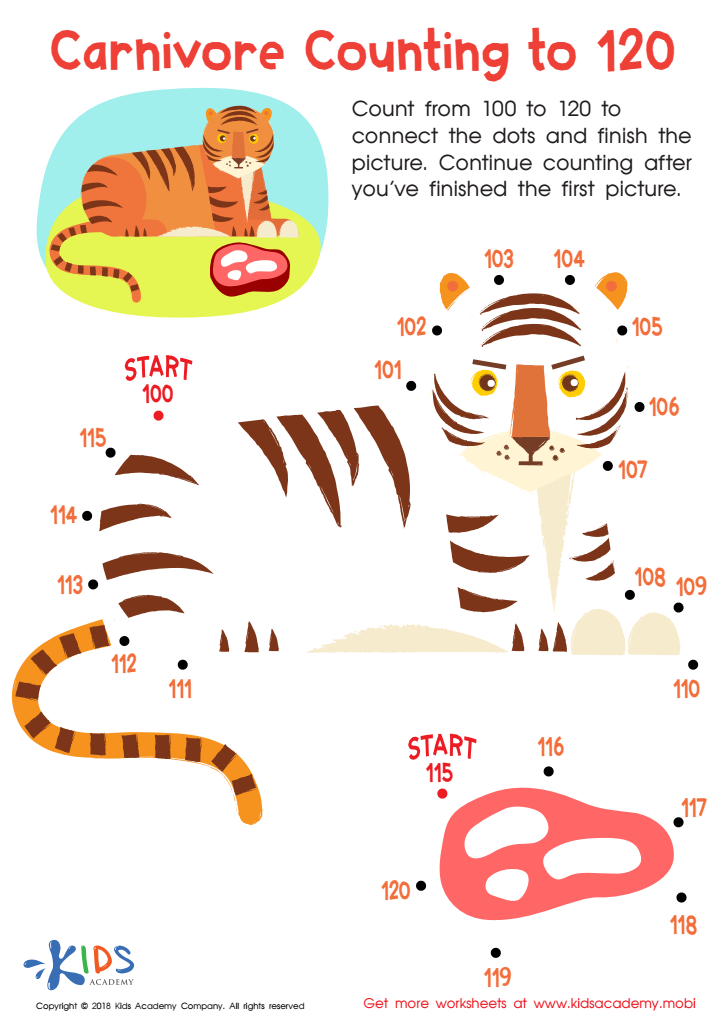

Carnivore Counting to 120 Worksheet
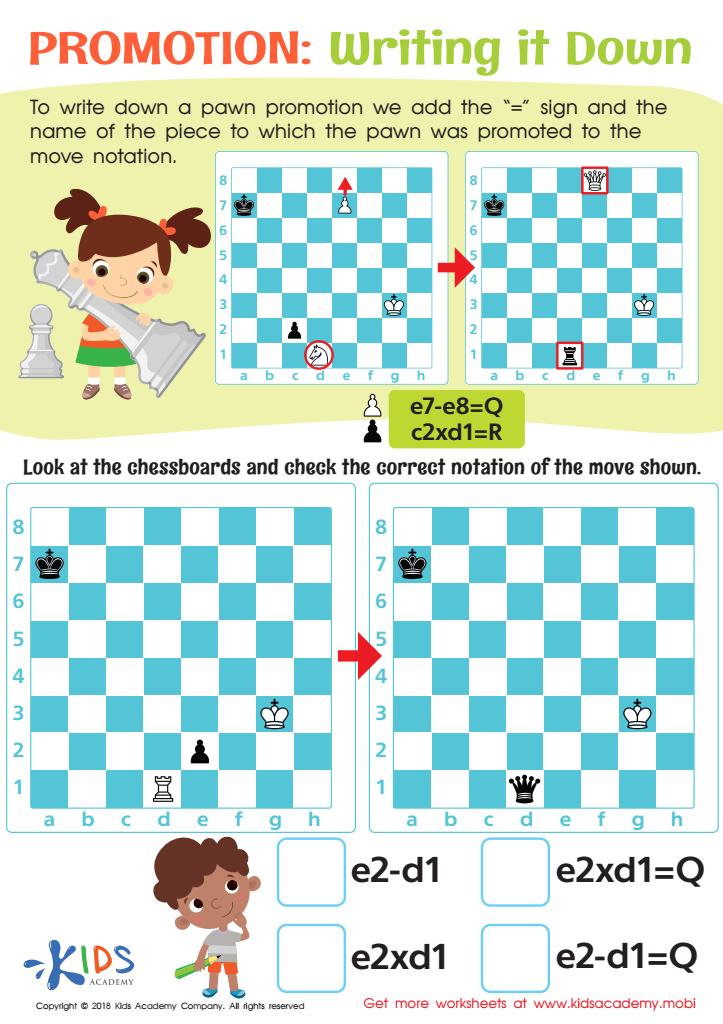

Writing it Down Worksheet
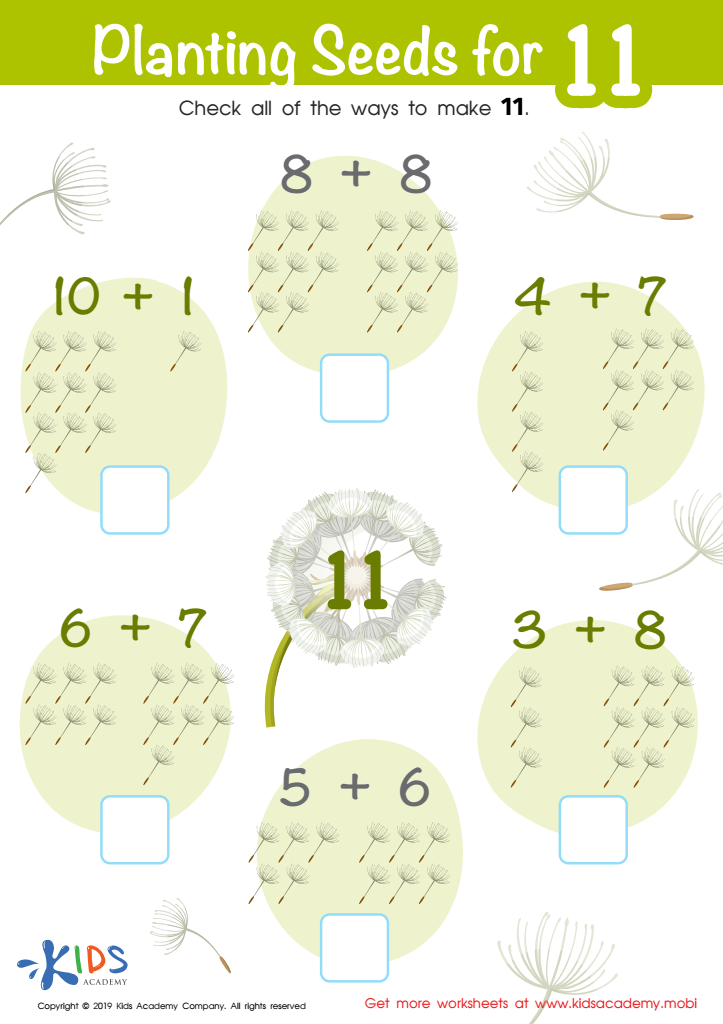

Planting Seeds for 11 Worksheet
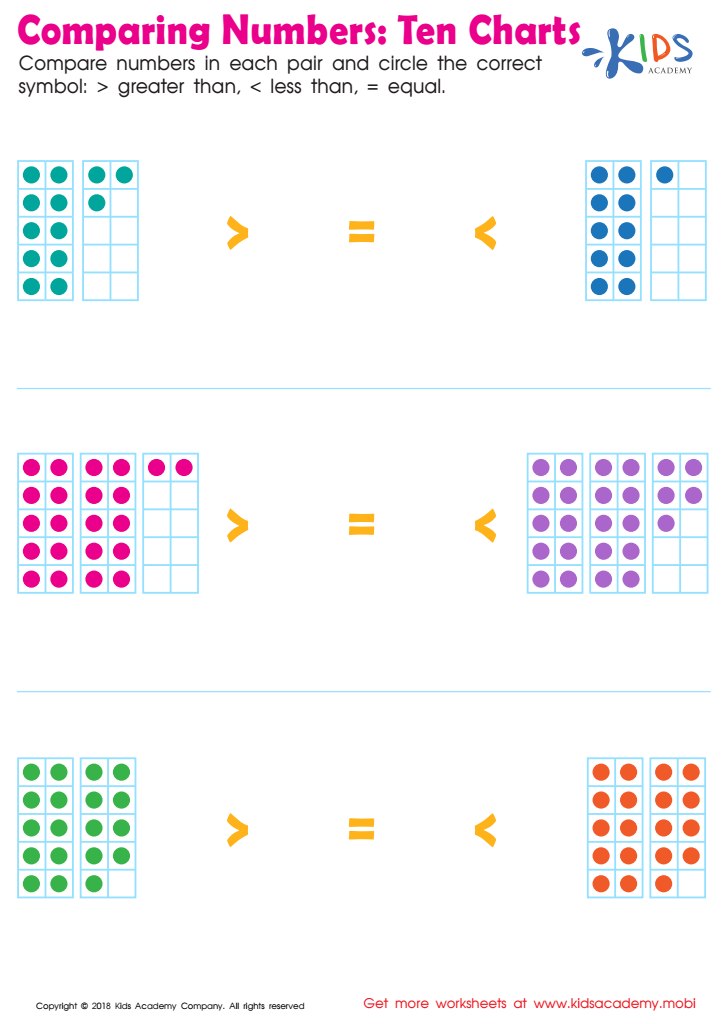

Ten Charts Worksheet
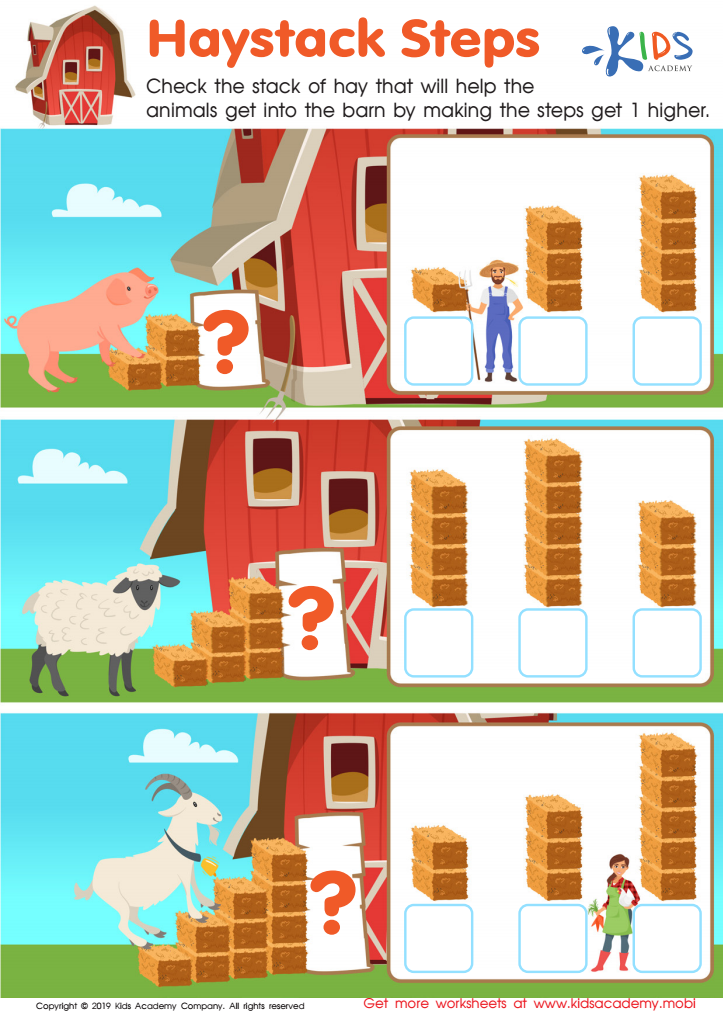

Haystack Steps Worksheet
Understanding sequences is fundamentally important for children aged 6-7 because it builds a strong foundation for various essential life and academic skills. Firstly, learning sequences helps young children grasp the concept of order and predictability. This aids in their understanding of daily routines and the ability to anticipate what comes next, which enhances their sense of security and independence.
In the context of academics, sequence understanding forms a basic component of mathematics and literacy. For instance, recognizing number sequences is integral to grasping addition, subtraction, and eventually more complex math concepts. Similarly, understanding the sequence of events in a story helps children improve their reading comprehension and narrative skills. It also enhances critical thinking because children learn to arrange information logically and understand cause and effect.
Furthermore, mastering sequences encourages pattern recognition, a crucial skill in almost all areas of learning, including science and arts. Pattern recognition not only bolsters problem-solving abilities but also fuels creativity and innovation.
Additionally, in a social setting, understanding sequences aids communication and social interactions. Knowing conversational sequences helps children learn turn-taking and empathy by understanding how conversations naturally flow.
Therefore, parents and teachers should prioritize teaching sequences, as this fundamental skill impacts a wide array of cognitive, academic, and social competencies in young children.
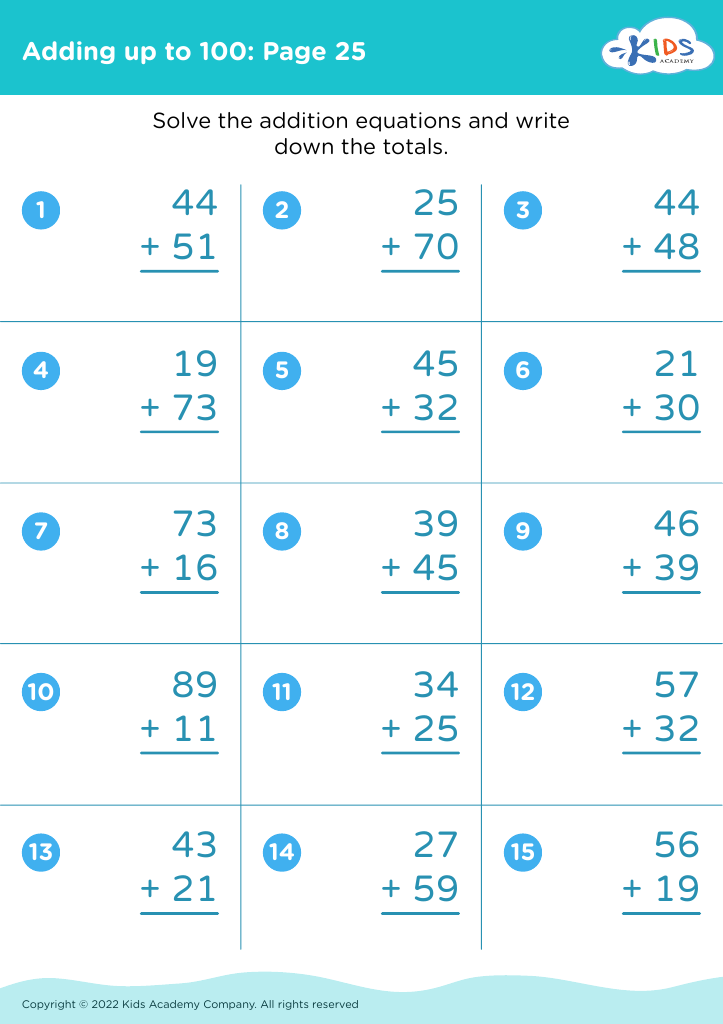
 Assign to My Students
Assign to My Students


